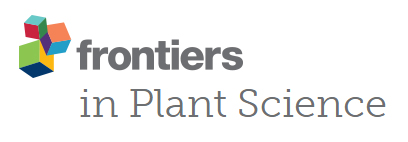- EN - English
- CN - 中文
Surface Inoculation and Quantification of Pseudomonas syringae Population in the Arabidopsis Leaf Apoplast
拟南芥叶质外体中丁香假单胞菌种群的表面接种和定量
(*contributed equally to this work) 发布: 2017年03月05日第7卷第5期 DOI: 10.21769/BioProtoc.2167 浏览次数: 13547
评审: Jyotiska ChaudhuriAnonymous reviewer(s)
Abstract
Bacterial pathogens must enter the plant tissue in order to cause a successful infection. Foliar bacterial pathogens that are not able to directly penetrate the plant epidermis rely on wounds or natural openings to internalize leaves. This protocol describes a procedure to estimate the population size of Pseudomonas syringae in the leaf apoplast after surface inoculation of Arabidopsis rosettes.
Keywords: Leaf inoculation (叶接种)Background
Plant pathogenic bacteria causing foliar diseases may penetrate the leaf epidermis through wounds and natural openings such as stomata. Stomata are microscopic pores that mediate the regulation of transpiration and the exchange of gases between the plant and the atmosphere. Interestingly, we have demonstrated that bacteria can induce stomatal closure. This phenomenon is now recognized as stomatal defense, which hampers bacterial internalization into the leaf decreasing disease development (reviewed by Melotto et al., 2017, in press). Here, we describe a method adapted from Katagiri et al. (2002) and Panchal et al. (2016a and 2016b) to measure the total endophytic bacterial population of Pseudomonas syringae within Arabidopsis leaf tissue after surface inoculation. This procedure is useful to estimate bacterial penetration of leaves through stomata in a laboratory setting.
Materials and Reagents
- 3.5-inch square pots with holes (Hummert International, catalog number: 12-1300-1 )
- Soil mix, SunGro Sunshine® #1 Mix (Crop Production Services, catalog number: 1000590701 ) or equivalent
- Fine vermiculite (Growers Solution, catalog number: Vermiculite4cf )
- 48 inch x 100 ft Charcoal fiberglass screen (The Home Depot, catalog number: 3000016 )
- 15 ml and 50 ml centrifuge tubes
- Plastic domes (Hummert International, catalog number: 65-6964-1 )
- Sharpie markers, paper towels, Kimwipes, disposable gloves, rubber bands, forceps
- Square Petri dishes (Thermo Fisher Scientific, Thermo ScientificTM, catalog number: 240835 )
- Micropipettes (Rainin Pipet-LiteTM)
- 1.5 ml microfuge tubes
- Plastic pestles that fit 1.5 ml microfuge tubes (SP Scienceware - Bel-Art Products - H-B Instrument, catalog number: 19923-0001 )
- Plastic trays without holes (Hummert International, catalog number: 65-6963-1 )
- Microbreathe face mask (VWR, catalog number: 10833-224 )
- Arabidopsis thaliana (L. Heyhn.) ecotype Columbia (Col-0, ABRC stock CS60000). Seeds can be stored at 4 °C and are viable for 3-4 years
- Pseudomonas syringae bacterial culture (stored in 25% glycerol at -80 °C)
- Gnatrol (Hummert International, catalog number: 01-2035-1 )
- Arabidopsis controlled release fertilizer (LEHLE SEEDS, catalog number: PM-11 )
- Appropriate antibiotic (e.g., Rifampicin)
- MgCl2 solution
- Glycerol (MP Biomedicals, catalog number: 151194 )
- Silwet L-77 (LEHLE SEEDS, catalog number: VIS-30 )
- Reagent alcohol (Sigma-Aldrich, catalog number: 793183 )
- Sterile distilled water
- Agarose (VWR, catalog number: 97062-250 )
- Tryptone (IBI Scientific, catalog number: 41116105 )
- Yeast extract (U.S.Biotech Sources, catalog number: Y01PD-500 )
- Sodium chloride (NaCl) (Fisher Scientific, catalog number: S271-500 )
- Bacteriological agar (IBI Scientific, catalog number: IB49171 )
- 0.1% agarose (see Recipes)
- Low-sodium Luria Bertani medium (see Recipes)
Equipment
- 1 ml micropipette
- Refrigerator or a cold room
- Plant growth chamber (Caron Products & Services, model: 6341-2 )
- Shaker incubator (VWR, catalog number: 12620-946 )
- Spectrophotometer (Thermo Fisher Scientific, model: Spectronic 20D+ or equivalent)
- Centrifuge (Eppendorf, model: 5810 )
- Handheld electric drill (BLACK + DECKER, catalog number: LDX120C )
- Cork borer No. 2 (Cole-Parmer, catalog number: EW-06298-98 )
- Digital hygrometer (VWR, catalog number: 35519-047 )
- Quantum meter (Apogee, catalog number: BQM )
- Vortex (BioExpress, GeneMate, catalog number: S-3200-1 )
- Autoclave
- laminar flow hood
Procedure
文章信息
版权信息
© 2017 The Authors; exclusive licensee Bio-protocol LLC.
如何引用
Jacob, C., Panchal, S. and Melotto, M. (2017). Surface Inoculation and Quantification of Pseudomonas syringae Population in the Arabidopsis Leaf Apoplast. Bio-protocol 7(5): e2167. DOI: 10.21769/BioProtoc.2167.
分类
植物科学 > 植物免疫 > 宿主-细菌相互作用
微生物学 > 微生物-宿主相互作用 > 细菌
细胞生物学 > 细胞分离和培养 > 细胞生长
您对这篇实验方法有问题吗?
在此处发布您的问题,我们将邀请本文作者来回答。同时,我们会将您的问题发布到Bio-protocol Exchange,以便寻求社区成员的帮助。
提问指南
+ 问题描述
写下详细的问题描述,包括所有有助于他人回答您问题的信息(例如实验过程、条件和相关图像等)。
Share
Bluesky
X
Copy link














